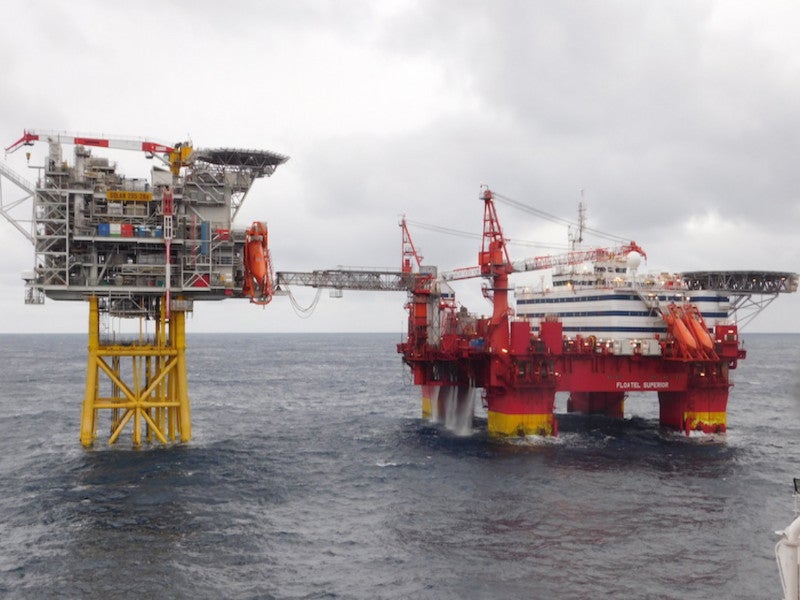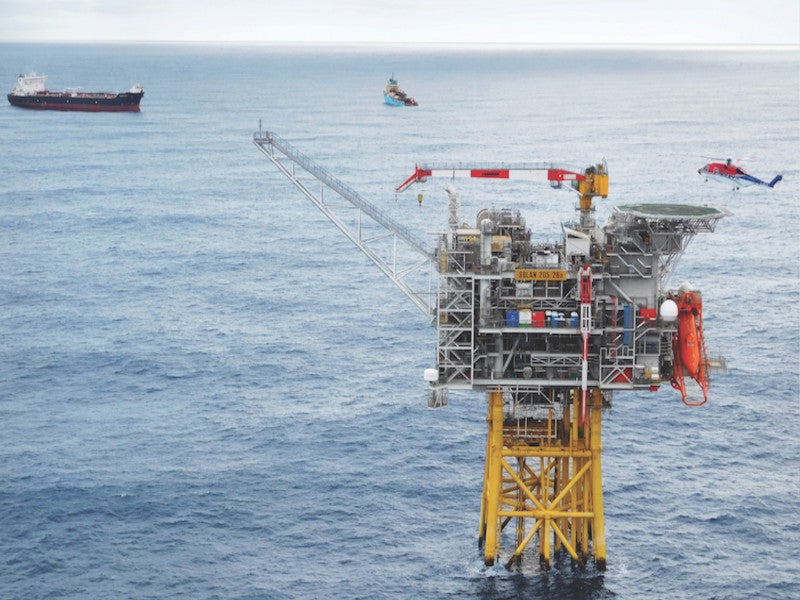The Solan oil field, discovered in the early 1990s, is situated in the northern part of the North Sea, west of the Shetland Islands on the fringes of the Atlantic Ocean.
The field is wholly owned and operated by Premier Oil UK, a subsidiary of Harbour Energy.
It is anticipated that production at the Solan field will become sub-economic by late 2024, leading to the cessation of operations.
The environmental impact assessment for the decommissioning process was issued in May 2024. Decommissioning activities at the Solan field are expected to commence in 2026 and continue until 2031.
Project location
The Solan field lies 129km west of the main island of Shetland and 165km north of mainland Scotland. It is positioned in Block 205/26a of the United Kingdom Continental Shelf.
Solan field details
The field includes three production wells, P1, P2 and P3, supported by water injection wells W1 and W2, which are connected to the Solan platform.
The Solan platform has an integrated topside mounted on a four-legged jacket substructure, which is anchored to the seabed with 16 piles. The jacket stands at a height of 158.5m, with dimensions of 20m by 20m at the top and 45m by 45m at the base.
Surface installation decommissioning
The Solan topsides will be entirely removed and transported onshore to a recycling and disposal facility, where waste will be processed in accordance with the waste framework directive. The removal will be executed using a single lift by a semi-submersible crane vessel (SSCV) or single lift vessel (SLV), or by dismantling the topsides into smaller sub-units with a crane vessel or support vessel, such as a monohulled crane vessel.
The jacket will have its legs cut to install lifting aids, aiming for removal in a single lift with the piles being cut internally to a target depth of 3m below the average natural seabed level. The entire jacket will be transported onshore for recycling and disposal in line with the Waste Framework Directive, with the lift performed by an SSCV or SLV.
Subsea infrastructure decommissioning
A fleet of vessels with varying crane capacities will be deployed to support operations such as lifting seabed structures, cutting, backfilling, excavation, rock placement and surveys. Remotely operated vehicles or divers will be deployed to disconnect and cut subsea installations, with vessel cranes lifting them onboard for recovery.
Pipelines, flowlines and umbilicals will be disconnected from subsea and surface structures, with any covering mattresses and grout bags retrieved by the vessel. These lines will then be prepared for decommissioning.
All subsea installations, including the subsea oil storage, single anchor loading, five wellhead protection structures and two wet-stored trash caps, will be fully removed and transported onshore for recycling or disposal. Piled subsea infrastructure will have their piles cut internally where possible and fully recovered.
A post-decommissioning debris survey will be conducted within all 500m safety zones and 50m on either side of PL3095 where it intersects the two 500m safety zones. Any oil and gas debris will be recovered for onshore disposal or recycling, following established disposal methods.






